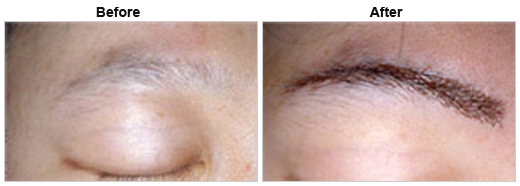WHAT IS HAIR TRANSPLANT SURGERY
WHAT IS HAIR TRANSPLANT SURGERY
Also referred to as Hair transplant surgery, Hair Restoration surgery may be a surgical technique to revive hair on the patient's balding part. During the surgery, the doctors move the hair follicles from the 'donor site' and transfer them to the 'recipient site' or the bald area. The hair follicles are usually taken from the generally not vulnerable areas to balding such as the head's back.
There are two types of surgery:
Follicular Unit Transplantation (FUT): In FUT, a strip of scalp is removed then dissected into individual grafts.
Follicular Unit Extraction (FUE): the opposite method, FUE Transplant Delhi, involves taking the individual follicles using specialised tools. However, the surgery procedure remains the same.
WHY IS HAIR TRANSPLANT SURGERY DONE
One of the most common reasons behind hair restoration surgery is to achieve a youthful appearance to boost confident behaviour. In addition to the hair transplant of the scalp, the surgery can also restore hair in other areas such as eyelashes, eyebrows, beard hair, and hide the scars occurred after accidents or surgeries.
HAIR TRANSPLANT BEFORE AND AFTER
Before the Surgery
Before the surgery, the doctors conduct several tests to ensure that they are fit for the surgery. Some of the tests performed are going to be blood tests, allergy tests and liver function tests. The surgeon also will examine the hair area of the donor. Moreover, he would advise the patient to follow specific pre-operative instructions to avoid any surgery complication.
During the Surgery
Before beginning the surgery, the surgeon cleans the scalp thoroughly. After the cleaning, the surgeon will use local anesthesia to numb the scalp. After this, some section of the scalp covered with hair will be removed using a scalpel. After that, the area will be appropriately stitched.
Using a magnifying lens and a sharp surgical knife, the surgeon will separate the removed scalp into tiny sections that will later be placed into the scalp's bald area. After the transplant, the surgeon will cover the world with bandages for healing. The whole surgery may take up to four or more hours.
After the Surgery
Usually, it takes around ten days to get rid of the stitches. A person may need to undergo the hair transplant surgery again counting on their hair loss. The patient will get to take regular medication to alleviate issues like pain, swelling and sore scalp. The medicines also help in reducing the danger of infection after the surgery. Further, drugs also are prescribed to enhance hair growth and stop future hair loss.
Usually, most people who undergo the surgery return to their work several days after the session. Another thing which will trouble the patient is that the fall of the transplanted hair. This is referred to as 'shock loss'. However, it's a phenomenon because it makes way for brand spanking new hair growth. Noticeable and satisfactory hair growth is typically achieved after nine months of the surgery.
Advantages of Hair Restoration Surgery
Here are the benefits that a patient can expect after hair restoration surgery:
- Improved Appearance
- Improved Self-Esteem
- Reduction in Hair Maintenance Costs
WHAT YOU NEED TO KNOW ABOUT SURGERY
of Fue Transplant Delhi
In the majority of cases, there are almost no complications or risks after the hair transplant. Even if the complications occur, they are not harmful and diminish after a few weeks. Some of the problems which will appear after the hair restoration surgery are bleeding, swelling, infection, bruising round the eyes, numbness within the treated area, itching, and inflammation. As these symptoms are often easily treated with medication, the patient shouldn't worry. For any other doubts, one can always seek medical attention and follow the surgeons' advice for a better and healthy recovery.




Comments
Post a Comment